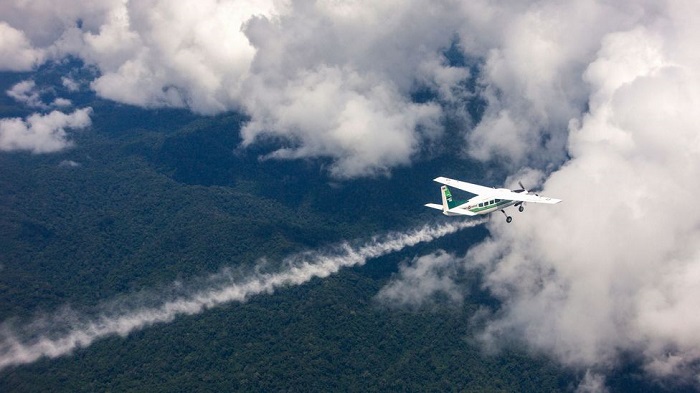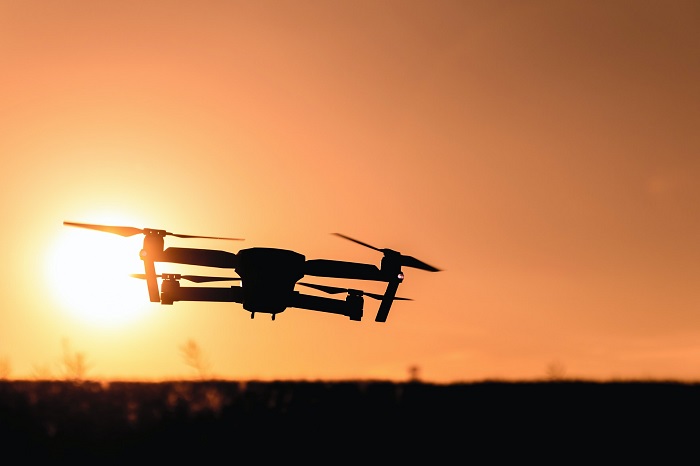ISABEL RUBIO ARROYO | Tungsteno
While controlling the clouds to make it rain in the middle of the desert may sound like science fiction, this is the ambitious goal achieved this year by the United Arab Emirates. Using drones and electric discharges, the country has created artificial rain and triggered rainfall. But it is not the only country interested in modifying the weather. While a number of governments have been experimenting with techniques to achieve this for decades, China aims to control when it rains and snows in half of the country by 2025.
The great challenge of combating drought with artificial rainfall
More than 50 countries are currently carrying out activities to artificially modify the weather, according to Spain's State Meteorological Agency. They seek to reduce hail size and damage, disperse fog or increase rainfall by 10% to 20%. This last objective may be especially useful for sectors such as agriculture, as global droughts have become more common in recent decades due to climate change.
"The different climate change scenarios lead to a general increase in the duration and intensity of both meteorological and hydrological droughts, due to the combined effects of reduced precipitation and increased evapotranspiration," explains Manuel Pulido, director of the Institute of Water and Environmental Engineering at the Polytechnic University of Valencia.

Global droughts have become more common in recent decades due to climate change. Credit: Pixabay.
In order to combat drought, the United Arab Emirates has been trying different methods to make it rain for years. In the first six months of this year alone, it carried out 219 operations to create artificial rain. The secret to this is artificial cloud seeding, a process that involves making existing clouds discharge as much water as possible regardless of the surrounding conditions.
Despite decades of research into such techniques, much scepticism still surrounds cloud seeding. This is partly due to the difficulty of verifying the effectiveness of the technique and establishing a causal relationship given the complexity and variability of weather systems. It should be borne in mind that no two clouds are alike and there are many factors that can influence the occurrence of precipitation.
Drones that release electrical charges in the clouds
With a network of radar and weather stations, the UAE monitors the country's atmosphere 24 hours a day. All this data is analysed to determine whether conditions are conducive to cloud seeding. While clouds are normally loaded with salt to form raindrops, the latest tactic in this country—where temperatures reach 40°C—is highly original: it involves using drones to release electrical charges that cause the water droplets in the clouds to coalesce so that they fall in the form of a downpour.
Releasing an artificial electrical charge is a geoengineering technique with the potential to modify rainfall. Clouds carry both positive and negative charges. A paper published in the Journal of Atmospheric and Oceanic Technology indicates that if droplets become electrically charged, their behaviour changes, which influences their collision, evaporation and deposition. This is precisely what has happened in the United Arab Emirates, at least theoretically.
The unmanned drones sent pulses of electricity into the clouds to make the water droplets merge and stick together, "like dry hair to a comb," according to Maarten Ambaum, who worked on the project. He says that "when the droplets merge and are big enough, they will fall as rain." "It is likely that charging cloud droplets on its own won’t replace established cloud-seeding techniques, but it could work alongside existing techniques to maximise the efficiency of cloud seeding," says Keri Nicoll, coordinator of the research.

In the first six months of this year alone, the UAE carried out 219 operations to create artificial rain. Credit: Pexels.
Decades of research to control precipitation
The UAE is not the first country to try to control the weather. Many others have been attempting to control rainfall for decades. The first experiments were conducted in 1946 by American chemist and meteorologist Vincent J. Schaefer. Since then, cloud seeding has been carried out from aeroplanes, rockets and even cannons. Substances that have been used for this process include solid carbon dioxide (dry ice) and silver iodide.
For example, at the 2008 Olympics, China had 30 planes, 4,000 rocket launchers and 7,000 anti-aircraft guns at its disposal to keep the rain away from Beijing. One year later, China claimed to have intentionally caused a heavy snowfall on the capital city that lasted about 11 hours. The Asian country's goals are now even more ambitious: it aims to control rain and snowfall over an area of 5.5 million square kilometres, representing more than half of the total area of 9.5 million square kilometres.

Cloud seeding has been carried out from planes, rockets and even cannons. Credit: Helal Almansoori.
As the Chinese government says in an official statement, rainfall monitoring can be particularly useful in the agricultural sector to prevent damage to crops. It could also be used to deal with emergency situations such as fighting forest fires or during periods of high temperatures or unusual droughts.
But despite the enormous potential of these methods, they all have their limitations. In addition to the limited scientific evidence confirming their effectiveness, it should be noted that rain cannot be created out of nothing. In other words, without clouds these technologies are powerless. And as Roelof Bruintjes of the US National Center for Atmospheric Research points out, "no one can currently make or dissipate a cloud." While "cloud seeding could be a tool to enhance water resources, it is not a 'drought-busting' mechanism because we need clouds."
· — —
Tungsteno is a journalism laboratory to scan the essence of innovation. Devised by Materia Publicaciones Científicas for Sacyr’s blog.
